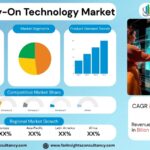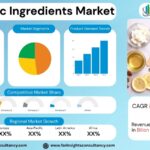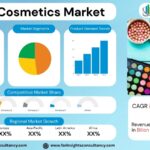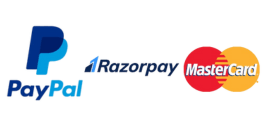
EV Battery Cell and Pack Materials Market 2025 Research Report By Cell Material (Lithium-ion Battery, Lead-Acid Battery, Nickel-Metal Hydride Battery, Ultracapacitors, Sodium-ion Battery), By Battery (Vehicle) (Battery Electric Vehicle (BEV), Hybrid Electric Vehicle (HEV), Plug-in Hybrid Electric Vehicle (PHEV), Fuel Cell Electric Vehicle (FCEV)), by Pack Material (Battery) (Lithium-ion Battery, Lead-Acid Battery, Nickel-Metal Hydride Battery, Ultracapacitors, Sodium-ion Battery), and by Region- Global Forecast to 2034
May-2025 Formats | PDF | Category: Automotive | Delivery: 24 to 72 Hours
“The EV Battery Cell and Pack Materials Market is expected to expand from 26.59 Billion in 2025 to $ 89.78 Billion in 2034, with a compound annual growth rate of 14.57% “
EV Battery Cell and Pack Materials Market: Overview and Growth in the Upcoming Year
The market for EV battery cells is one of the most significant in the broader electric vehicle industry. The battery cells at the heart of any electric vehicle provide the energy needed to move the vehicle. As the demand for electric vehicles increases, so does the need for high-end battery cells that can deliver remarkable performance and long-lasting durability.
The increasing focus on sustainability and environmental friendliness is largely responsible for the growth of the EV battery cell market. As consumers become more conscious of their carbon footprint, clean energy-powered electric vehicles are gaining popularity. Better battery cell materials that can store more energy, charge more quickly, and last longer are in greater demand as a result of this trend.
In addition to battery cells, pack materials are another important component of the EV market. Pack materials include things like cases, cooling systems, and other components that house and protect the battery cells. High-quality pack materials are crucial for ensuring the battery pack’s longevity and safety in addition to optimising performance and energy efficiency.
The market for EV battery cell and pack materials is anticipated to grow substantially over the next 12 months. The market is expected to expand rapidly as more consumers opt for electric vehicles because of advancements in technology and increased investment in infrastructure. Government incentives and policies aimed at reducing carbon emissions are also driving up demand for EVs and related parts.
The market for EV battery cell and pack materials is a thriving and rapidly growing sector of the electric vehicle industry. Because of favourable government regulations, growing consumer demand, and technological advancements, the industry is anticipated to grow significantly in the upcoming year. As long as manufacturers continue to develop new concepts and materials, the EV industry as a whole seems to have a promising future.
For Insights Consultancy’s latest market intelligence study, “Global EV Battery Cell and Pack Materials Market 2025, Growth Opportunities, and Forecast,” provides a comprehensive analysis of the Food industry. The report includes demand analysis, industry insights, competition intelligence, and a customer database. It also offers strategic insights into future trends, growth determinants, supplier landscape, demand landscape, CAGR, and pricing analysis. The study also includes Porter’s Five Forces Analysis, PESTLE Analysis, Value Chain Analysis, 4 Ps’ Analysis, Market Attractiveness Analysis, BPS Analysis, and Ecosystem Analysis.
*Note: Sample of the report provides details on the scope and coverage, table of contents, research methodology, and Sample Framework of the report. Actual report of 110+ is available for purchase to all the interested stakeholders.
Top Companies Covered In This Report:
- Samsung SDI
- SK Innovation Co. Ltd.
- CALB
- CATL
- LG Chem
- Panasonic Industry Co. Ltd.
- BYD
Industry News
March 6, 2024 CALB Powers Ahead with Revolutionary ‘U’ Structure Battery
China Aviation Lithium Battery Co. (CALB) has global ambitions, backed by a successful Hong Kong IPO, international expansions, and strategic EV maker partnerships.
2024.08.28 SAMSUNG SDI and General Motors Finalize Agreement to Establish Battery Joint Venture in the U.S.
Two companies to invest approximately $3.5bn in an EV battery plant with an initial capacity of 27GWh up to 36GWh and production target of 2027.
Detailed Segmentation and Classification of the report (Market Size and Forecast – 2034, Y-o-Y growth rate, and CAGR):
Segment By Cell Material (Battery)
- Lithium-ion Battery
- Lead-Acid Battery
- Nickel-Metal Hydride Battery
- Ultracapacitors
- Sodium-ion Battery
Segment By Battery (Vehicle)
- Battery Electric Vehicle (BEV)
- Hybrid Electric Vehicle (HEV)
- Plug-in Hybrid Electric Vehicle (PHEV)
- Fuel Cell Electric Vehicle (FCEV)
Segment By Pack Material (Battery)
- Lithium-ion Battery
- Lead-Acid Battery
- Nickel-Metal Hydride Battery
- Ultracapacitors
- Sodium-ion Battery
Regional Deep-dive Analysis:
North America
United States
The US is now a major hub for the production of electric vehicles thanks to large investments made by companies like Tesla, Ford, and General Motors. Thus, there is a higher demand for premium battery components like cobalt, nickel, and lithium.
Canada
Leading the way in Canada’s EV sector advancements are businesses like Ballard Power Systems and Magna International. The country is a crucial link in the supply chain for battery materials because of its wealth of natural resources.
Mexico
Mexico is emerging as a significant player in the EV battery market thanks to investments made in battery manufacturing by companies like Grupo Industrial Saltillo and Nemak. Because of its close proximity to the US market, the country is a desirable destination for manufacturers looking to expand their operations.
Asia-Pacific
China
China is the global leader in the production and adoption of electric vehicles. The Chinese government’s vigourous promotion of EV use through subsidies and incentives has increased demand for EV battery cell and pack materials. With major companies like CATL and BYD controlling the market, China is setting the standard for innovation in EV battery technology. The country’s robust manufacturing infrastructure and supportive laws make it a lucrative market for suppliers of EV battery materials.
Japan
Japan is a major player in the Asia-Pacific EV battery materials market. Japanese companies like Sony and Panasonic, which are well-known for their superior battery technology, have strong partnerships with foreign automakers. Because of its focus on EV research and development, Japan has become a hub for the development of advanced battery materials. With an emphasis on sustainability and energy efficiency, Japan is a significant market for EV battery cell and pack materials.
South Korea
Prominent South Korean battery producers, such as Samsung SDI and LG Chem, supply batteries to top EV manufacturers worldwide. The country’s commitment to green technology and innovation has led to a significant advancement in the production of lithium-ion batteries. Because of its robust supply chain and technological know-how, South Korea is a significant player in the market for EV battery materials. By focusing on the development of next-generation battery materials, South Korea is well-positioned to lead the region’s EV market expansion.
Europe
Germany
Germany is a major player in the European auto industry thanks to its top electric vehicle manufacturers, including Mercedes-Benz, BMW, and Volkswagen. The country’s large investments in EV infrastructure and technologies are driving the demand for battery cell and pack materials. Because of its strong emphasis on sustainability and innovation, Germany is expected to remain a significant market for EV materials in the years to come.
France
France is now a major player in the EV market, thanks to companies like Renault leading the way in the development of electric vehicles. The French government has implemented a number of incentives to promote the use of electric vehicles, which has increased demand for battery cell and pack materials. Given the growing emphasis on reducing carbon emissions, France has the potential to be a significant market for EV materials.
United Kingdom
The UK’s ambitious plans to phase out gasoline and diesel cars are driving the shift to electric vehicles. Companies like Nissan and Jaguar Land Rover have made large investments in EV production, which has resulted in a high demand for battery cell and pack materials. Because of its strong commitment to sustainability and clean energy, the UK is expected to play a significant role in the market for EV materials.
Norway
Norway is a global leader in EV adoption, with a significant portion of the country’s automobile market being electric vehicles. Norway has seen a rapid rise in EV sales due to the government’s generous incentives for EV owners. Norway is therefore a lucrative market for suppliers of EV materials due to its high demand for battery cell and pack materials.
Middle East and Africa
UAE
The United Arab Emirates (UAE) is one of the Middle East’s biggest markets for EVs. With a focus on sustainability and reducing carbon emissions, the UAE government has been actively promoting the use of EVs. Consequently, the demand for EV battery cell and pack materials has been steadily rising across the country. Both domestic and international producers are making investments to expand their production capacities in order to satisfy this growing demand.
Saudi Arabia
Saudi Arabia, which is well-known for its enormous oil reserves, is also advancing electric car technology. The country has set ambitious goals to reduce its oil dependency and transition to a more sustainable energy mix. Saudi Arabia’s shift to electric vehicles has raised the country’s demand for EV battery materials. Major market participants are investigating the possibility of setting up production facilities in the country to meet this demand.
South Africa
South Africa is one of Africa’s most significant EV markets. The government’s focus on reducing carbon emissions and promoting renewable energy alternatives is increasing consumer interest in EVs. As a result, South Africa’s demand for EV battery cell and pack materials is rising. Both domestic and international suppliers are increasing their production capacity in order to satisfy this growing demand and seize the growing market opportunities.
Nigeria
Nigeria’s large population and growing economy make it a promising market for EV battery cell and pack materials. Government programmes to promote eco-friendly modes of transportation and reduce pollution have accelerated the country’s adoption of electric vehicles. As a result, Nigeria’s demand for high-quality battery materials is rising, attracting investments from both local and international businesses.
The research provides answers to the following key questions:
- What is the expected growth rate of the EV Battery Cell and Pack Materials Market from 2025-2034?
- What are the key driving forces shaping the market during the forecast period?
- Who are the major market vendors and what winning strategies have helped them occupy a strong foothold in the EV Battery Cell and Pack Materials Market?
- What are the prominent market trends influencing the market’s development?
Key insights provided by the report that could help you take critical strategic decisions?
- Regional reports analyse product/service consumption and market factors in each region.
- Reports highlight possibilities and dangers for suppliers in the EV Battery Cell and Pack Materials Market business globally.
- The report identifies regions and sectors with the highest growth potential.
- It provides a competitive market ranking of major companies, as well as information on new product launches, partnerships, business expansions, and acquisitions.
- The report includes a comprehensive corporate profile with company overviews, insights, product benchmarks, and SWOT analysis for key market participants.
Customization: We can provide following things
1) On request more company profiles (competitors)
2) Data about particular country or region
3) We will incorporate the same with no additional cost (Post conducting feasibility).
Any Requirement Contact us: https://forinsightsconsultancy.com/contact-us/
Table of Contents
For TOC Contact us: https://forinsightsconsultancy.com/contact-us/







